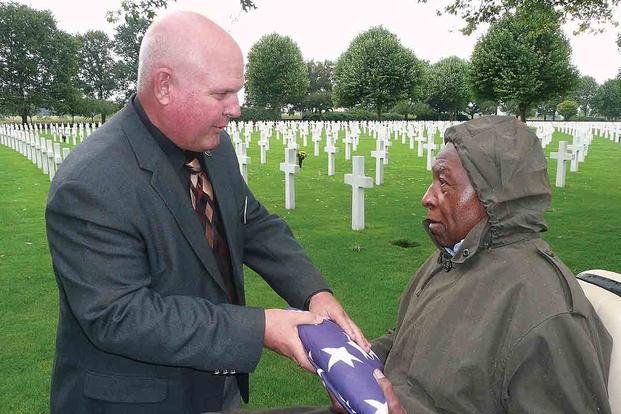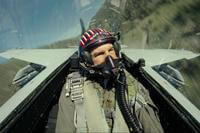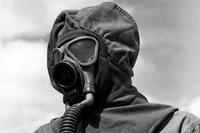War movie fans know that "Saving Private Ryan" begins with World War II veteran James Ryan visiting the grave of Capt. John Miller in one of Europe's 13 American cemeteries. The rest of the movie is about how Miller ended up in the grave, but where it -- and most war movies -- stop the story is when the hero is killed in battle. No one ever seems to think about how their remains are actually interred and who takes care of the graves in the years to come.
Everyone, that is, except author Robert Edsel. His new book, "Remember Us: American Sacrifice, Dutch Freedom, and a Forever Promise Forged in World War II" revolves around 12 people whose lives were intertwined over six years of warfare. They not only contributed to the burial of American war dead, but the remembrance and continued care of the graves of those who fought to liberate the Netherlands.
"How did the dead get from the battlefield and into one of our military cemeteries? What is that process like? It's a car wreck that none of us think we want to know about, but it's never been told and it's an amazing operation," Edsel told Military.com. "If you understand what those people have done and the lengths that they went to, you can't help but have tears in your eyes and be humbled by it."
Read Next: What the Life of a Navy Fighter Pilot Really Looks Like

The story begins in May 1940 in the Dutch province of Limburg, when Nazi Germany invaded the Netherlands as part of its larger strategy against France and the Low Countries. American GIs wouldn't reach this strategically important town until September 1944, at the cost of more than 13,000 Allied lives.
Today, 8,288 American troops are interred at the Netherlands American Cemetery near Maastricht. What started with locals agreeing to look after the graves of fallen friends has since become a tradition of care and remembrance among the Dutch in Limburg. They adopt the graves, remember the names and stories of those who gave their lives to free the Dutch people and adorn the memorials with flowers. There's even a wait list in Maastricht, and it's a long one.
"That's where World War II in Western Europe starts," Edsel said. "The tanks roll across the border there. Within a 50-mile radius, you have Market Garden, Aachen, Hurtgen Forest and the Battle of the Bulge, the four most important battles of Western Europe outside Italy and after D-Day. It's the headquarters for Gen. [William] Simpson's Ninth Army. Eisenhower wants to end the war in December '44, and when that doesn't happen, they're stuck there, stationary in the same place for about four months, and they get to know the people there."
The Netherlands were largely spared the destruction of World War I by remaining neutral, a neutrality both sides respected. Not so during World War II. Nazi Germany captured Maastricht on the first day of the war but encountered heavy resistance elsewhere. It was only after the shocking bombing of Rotterdam that the Dutch Army capitulated. It was placed under the control of a German military governor during the war, and all civil society organizations were Nazified. As the war went on, Germany forced Dutch men to work in war production, repression increased, and Dutch food and supplies were sent to Germany.
The people of the Netherlands suffered even after Allied forces began to liberate parts of the country. The final winter of the war became known as the "Hunger Winter" as the Germans cut off food and fuel to the Western provinces, leading to widespread famine and starvation. At the time, the people of the U.S. and the Netherlands had a lot in common.
"They got to know each other," Edsel said. "Our agrarian society produced a lot of the boys that went over to their agrarian society, and when a lot of them didn't come back at the end of the war, the families there grieved just like their American families. So already in January 1945, the Dutch in the Limburg area, who had experienced the loss of freedom for four years, four months and four days we're so immensely grateful. They were already trying to find ways to answer the question of how to thank their liberators."
One day, a Dutch civilian met an American officer in a local cemetery. The officer pointed out a grave to the man, told him that a cousin was buried there and asked the man whether he might watch over the grave when his unit moved on. The Dutch man agreed. Other soldiers began to ask the man the same favor, and soon he found he'd adopted more graves than one person could handle. It wasn't long before the rest of the locals were helping the effort.
Today, the American Battle Monuments Commission staff maintain the graves and grounds at Netherlands American Cemetery (and 25 other cemeteries around the world). "Green teams" at the sites, mostly local residents, care for the gardens and trees, mow the grass and wash headstones to ensure they stay in a “like new” state, according to the ABMC.

"The people that lived in that area were doing grave adoption before anyone ever called it grave adoption," the author said. "This guy said: 'I have an idea. I've promised all these soldiers I'm going to look over these graves and, in a couple of cases, write to the relatives. I've made so many promises I can't live up to them. Maybe we could adopt the graves.' That's how it started, it's purely organic."
Edsel's previous work includes "The Monuments Men: Allied Heroes, Nazi Thieves, and the Greatest Treasure Hunt in History." His new book came about because of a chance introduction tied to that work of history. In 2015, he met Frieda van Schäik, who was a teenager in the Netherlands during the war. She wrote to Harvard University, where Walter Huchthausen had worked as a fellow before the war, trying to get the name and address of his mother. He was one of the American monuments officers who was killed and buried in Margraten.

"She told us she's taking care of his grave," Edsel said. "I made mention of that in 'Monuments Men.' We became pen pals. She had married a British soldier and lived outside London, and I went to England to meet her. She bear-hugged me like I was a long-lost son and said, 'You want to see my photos of when the German tanks crossed the border in Aachen and my photos of when the American tanks liberated us?
Like Freida, other Dutch families tried to reach out to the American families of GIs killed in action. The U.S. government and the Army refused to provide that information, but that didn’t stop the effort. Freida wrote to Harvard, but others took information from dog tags and began writing to mayors, locals and anyone else who might be able to send a message or photos to grieving families. Then, she told him why the Dutch were so determined to connect to those families.
“Have you been to the Netherland American Cemetery?” she asked Edsel.
Edsel replied he had been to the cemetery to see Huchthausen’s grave. But when she asked whether he knew about the grave adoption program, he told her he was learning about it for the first time.
"I was just astonished," he said. "I think it's a hugely important story, and it really is not a World War II story, but it's a story about how we honor people, how we remember them, how we preserve that legacy. It's a high-water mark in humanity as far as I'm concerned, the civility of the Dutch to have the presence of mind and gratitude to honor what we refer to as the 'Forever Promise' to the Americans buried there and their relatives, that they will watch over these graves like their own forever, and they have done it for 80 years."
Frieda would walk for miles, a few times a week, to care for his grave. She wasn’t alone. By Memorial Day 1946, all the graves in the cemetery were adopted by Dutch families and have remained in their care ever since. The waitlist might have been put on hold, but the people of the Netherlands have pledged to never stop caring for the graves -- their “Forever Promise.”
"Remember Us: American Sacrifice, Dutch Freedom, and A Forever Promise Forged in World War II" by Robert Edsel is available for pre-order now. It hits bookstores on April 29, 2025.
Want to Learn More About Military Life?
Whether you're thinking of joining the military, looking for post-military careers or keeping up with military life and benefits, Military.com has you covered. Subscribe to Military.com to have military news, updates and resources delivered directly to your inbox.

















